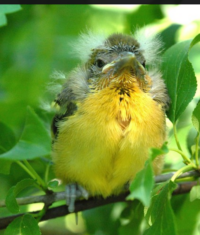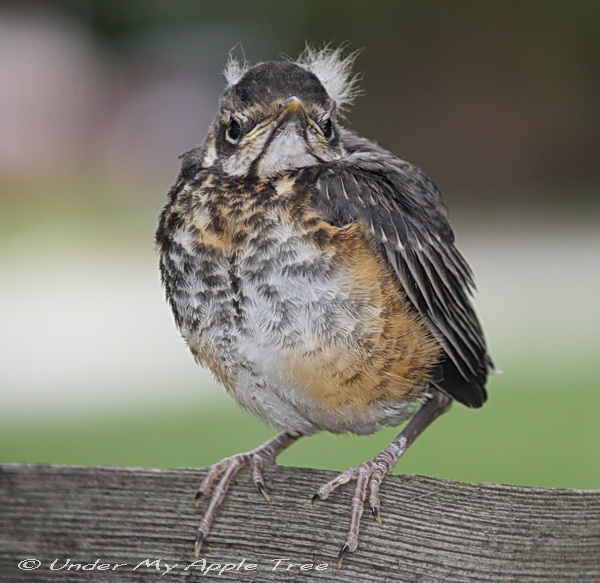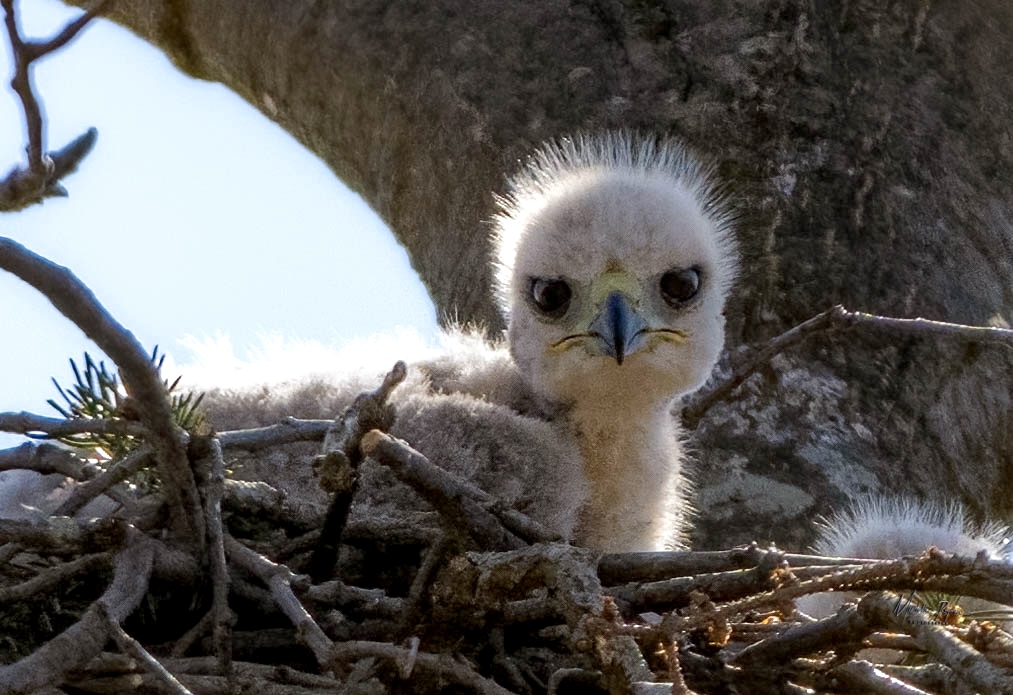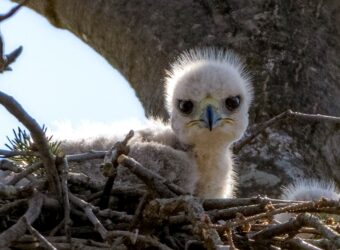The Adventure Begins
It all started with a silliest-looking baby bird you ever saw.
I was walking along a path in Croton Point Park when I heard an unfamiliar chattering call. In a place I know so well, any chirp or tweet I don’t recognize summons me like a thrown tennis ball attracts a golden retriever. So I immediately headed towards the leafy maple tree where I thought the call had come from.
Scanning the branches through my binoculars, I saw nothing at first. But then the chatter came again, and after a little more searching I found its source: a newly fledged Baltimore Oriole. It was clinging to the tree’s trunk, looking around with wide eyes, and making a racket as it sidled slowly towards the ground.

When I say the bird was newly fledged, I mean newly. Its plumage looked too big and bulky for its scrawny body (like a child wearing a grown-up’s clothes), and sprigs of white down stuck out from its head like the remnants of an Albert Einstein wig.
This was obviously the young oriole’s first solo journey, and clearly the baby bird wasn’t at all sure that the whole “leaving the nest” thing was a good idea. And in that moment, all my protective instincts said the same. I felt an intense desire to rush over, “rescue” the baby bird, and then…
And then what? Raise it myself? Bad idea for many reasons, not the least of which were my two cats at home. Or bring it to a rehabber specializing in injured birds? No. The rehabber would only tell me what I already knew: I should have left the young bird to take its chances.
Fortunately, it wouldn’t be taking those chances alone. Though I didn’t spot them from a distance, the young oriole’s parents were undoubtedly close by, ready to feed and protect their offspring as it made its uncertain way into the world.
Even so, I knew the odds were stacked against the little fledgling, just as they’re stacked against every baby bird. And these long odds make sense: Given that Baltimore Orioles usually lay between 3 and 7 eggs, if all—or even most—of the young survived, available habitats and food sources would soon be exhausted. Redundancy is built into the system to increase the odds that some babies will make it into adulthood, not to ensure that they all will.

And plenty do make it, if life at Croton Point these days is any evidence. To me, it felt as if that baby Baltimore Oriole served as a harbinger of the flood of new life that has filled the park these past few weeks. Everywhere, it seems, are recently fledged American Robins with no tails and speckled breasts; scruffy young European Starlings squalling as they pursue their harassed parents across the lawns; and baby Northern Cardinals who haven’t quite grown into their crests.
What I find most heartening about this season is how many less familiar birds, ones that are threatened by habitat loss, climate change, and other challenges, also manage to breed successfully here. Bobolinks, for example, can nest only in grasslands (a vanishing habitat) like those that cover the park’s central hill. Every year, this precious, restored habitat hosts a healthy crop of young Bobolinks, their yellow-brown plumage blending perfectly with the tall midsummer grasses.
And just today, in a tall maple tree, I saw an adult Eastern Kingbird, nattily dressed in black and white, jam a bright green katydid into the gaping mouth of the young one sitting beside it. Kingbird populations, like those of many songbird species, are gradually declining, making the trees—and katydids—of parks like Croton Point ever more important.
Nor is it only small songbirds that depend on local wild spaces and the food and shelter they bring. Though the male of the park’s resident Red-tailed Hawk pair died this spring (likely after being struck by a car), the female—a true superhero—succeeded in raising two nestlings on her own.

The two young hawks are out of the nest and able to feed themselves now, but that doesn’t mean they don’t still depend on their mother…or wish they did. On almost every visit to the park, you can hear one or the other letting loose with hoarse cries whose meaning is clear: “Hey, mom! I’m hungry!” Or maybe, more accurately, “I’m hungry! And lazy!”
Though the Red-tails will likely stick around the area all year, most of the birds I’ve described will soon start preparing for the serious task of migration. (Eastern Kingbirds, in fact, can spend the winter as far away as the Brazilian Amazon.) The young birds will stop whining for food, the parents will stop tending to their every whim, and then—too soon—they’ll all vanish till next spring.
Croton Point will be much quieter then, alas. But for now, a tumult of noise and activity and stress and excitement rules every corner of the park, and I’m enjoying every minute of it.
Copyright © 2024 by Joseph Wallace
